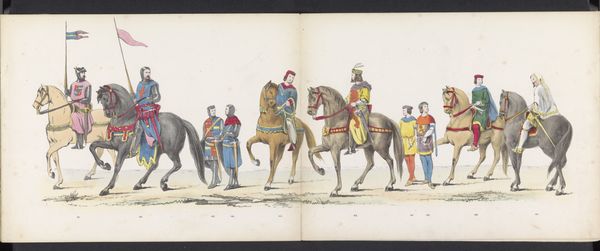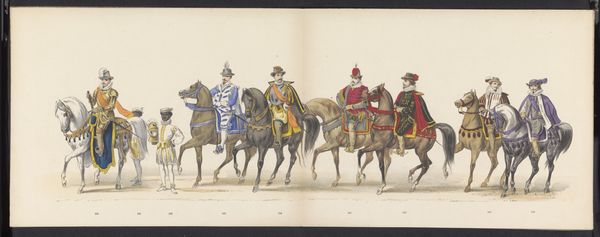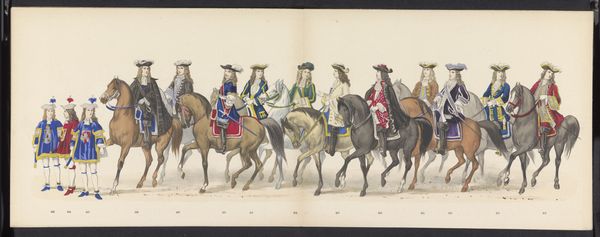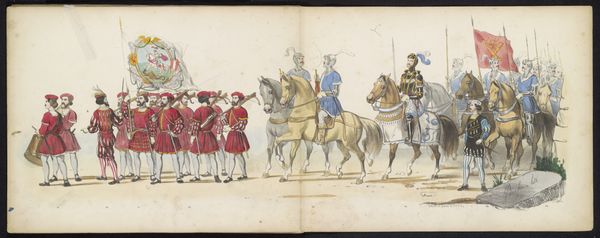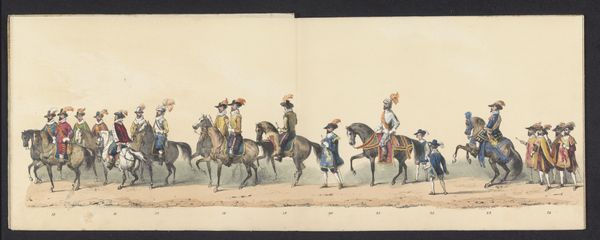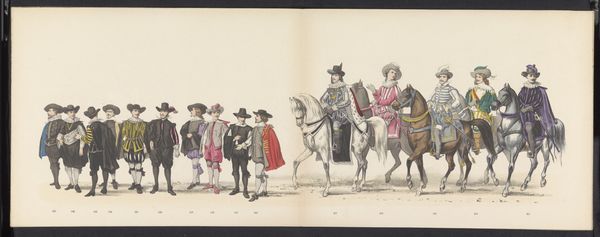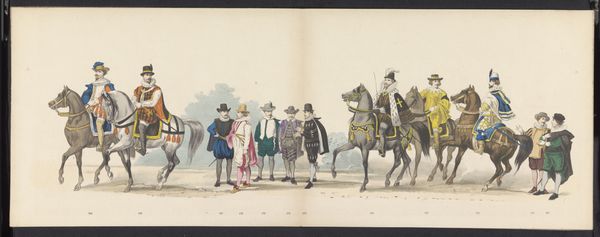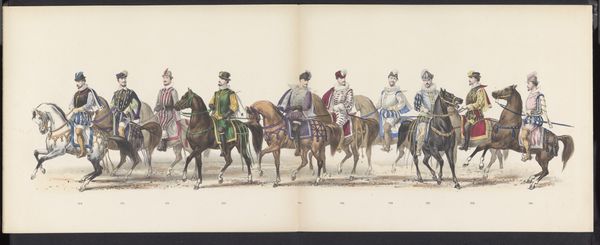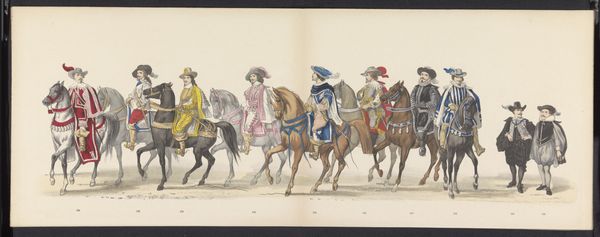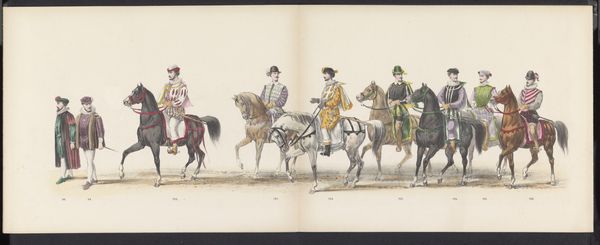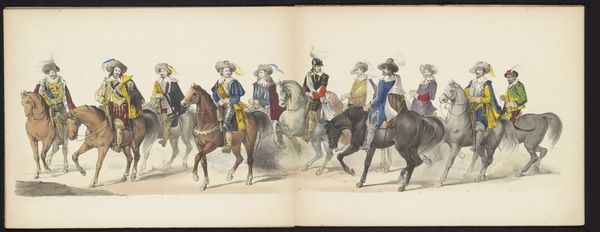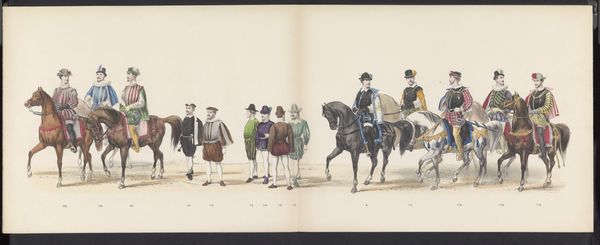
watercolor, ink
#
portrait
#
16_19th-century
#
sketch book
#
watercolor
#
ink
#
watercolour illustration
#
genre-painting
#
history-painting
#
academic-art
Dimensions: height 265 mm, width 700 mm
Copyright: Rijks Museum: Open Domain
Curator: Here we have "Maskerade van de Leidse studenten, 1875 (plaat 15)"—a watercolor and ink work by Gerardus Johannes Bos, created in 1875 and held here at the Rijksmuseum. What strikes you initially about it? Editor: It’s… oddly subdued. Considering the title, I anticipated something far more exuberant. There's a formality that mutes any potential celebratory mood, it almost looks like a historical record. Curator: Precisely! Observe how the artist uses line and color to meticulously render each figure and horse. The muted palette and precise draughtsmanship speaks to an academic tradition, wouldn’t you agree? Editor: I see your point, however, looking closer reveals interesting socio-political commentaries. Consider the masked figures alongside traditionally dressed people; are they simply different segments of the university and city, or are deeper tensions visualized here regarding class and identity within the academic environment? The contrast makes you think about who is afforded visibility and who is othered. Curator: It’s definitely food for thought. See how each figure, whether on foot or horseback, is presented with equal visual weight. Each carefully depicted gesture serves as an indicator of the specific type being presented by the artist. We cannot overlook the importance of costuming to convey hierarchies! Editor: Costuming, absolutely, functions here to announce and negotiate the dynamics of power, a language everyone then understood and one that art continues to examine today through other signifiers of status. Bos gives us a detailed window into that past language and those visual codes. Curator: An argument can certainly be made that Bos delivers a subtle but critical glimpse into late nineteenth century Dutch society through the guise of documenting what ostensibly seems like university revelry. It would have undoubtedly carried deeper meaning for its contemporary viewers. Editor: Ultimately, beyond the academic artistry, what lingers is the picture’s restrained and controlled rendering of its topic. And the way it offers just a hint of what performance, identity, and authority looked like over a century ago. It quietly compels you to delve beneath the image.
Comments
No comments
Be the first to comment and join the conversation on the ultimate creative platform.
